Gallic acid
Synonym(s):3,4,5-Trihydroxybenzoic acid;Gallic acid
- CAS NO.:149-91-7
- Empirical Formula: C7H6O5
- Molecular Weight: 170.12
- MDL number: MFCD00002510
- EINECS: 205-749-9
- SAFETY DATA SHEET (SDS)
- Update Date: 2025-12-15 18:09:35
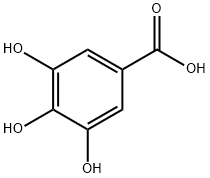
What is Gallic acid?
Description
Gallic acid is a tri hydroxy benzoic acid, a type of phenolic acid, a type of organic acid, also known as 3,4,5- tri hydroxy benzoic acid, found in gallnuts, sumac, witch hazel, tea leaves, oak bark, and other plants. The chemical formula is C6H2(OH)3COOH. Gallic acid is found both free and as part of hydrolyzable tannins.
Salts and esters of gallic acid are termed 'gallates'. Despite its name, it does not contain gallium.
Gallic acid is commonly used in the pharmaceutical industry. It is used as a standard for determining the phenol content of various analytes by the Folin - Ciocalteau assay; results are reported in gallic acid equivalents. Gallic acid can also be used as a starting material in the synthesis of the psychedelic alkaloid mescaline.
Gallic acid seems to have anti-fungal and anti - viral properties. Gallic acid acts as an antioxidant and helps to protect human cells against oxidative damage. Gallic acid was found to show cytotoxicity against cancer cells, without harming healthy cells. Gallic acid is used as a remote astringent in cases of internal haemorrhage. Gallic acid is also used to treat albuminuria and diabetes. Some ointments to treat psoriasis and external haemorrhoids contain gallic acid.
Description
Gallic Acid, or 3,4,5-trihydroxybenzoic acid, is produced by plants such as sumac, tea leaves, oak bark, and witch hazel; it provides the astringent property and antihemorrhoid activity of witch hazel. Derivatives are used in the production of azo dyes and photographic developers. It gets its name from gall nuts, which are the swelling of plant tissue in response to parasitic infection.
Chemical properties
Gallic acid, also known as trihydroxybenzoic acid, is a colorless crystalline needles or prisms that is obtained from nutgall tannins. It is soluble in hot water, ether, ethanol, acetone and glycerin, insoluble in cold water, insoluble in benzene and chloroform and has a melting point of 235 to 240 °C (decomposition). When heated to 100-120°C, crystal water will be lost, and when heated above 200°C, carbon dioxide will be lost to generate pyrogallic acid (ie, pyrogallol). It is used in photography, tanning, ink manufacture and pharmaceuticals.
Occurrence
Gallic acid is found in a number of land plants. It is also found in the aquatic plant Myriophyllum spicatum and shows an allelopathic effect on the growth of the blue-green alga Microcystis aeruginosa.
In food
Areca nut
Bearberry (Arctostaphylos sp)
Bergenia sp
Blackberry
Hot chocolate
Juglans regia (Common walnut)
Mango in peels and leaves
Phyllanthus emblica (Indian gooseberry) in fruits
Raspberry
Syzygium aromaticum (clove)
Vinegar
wine
Witch hazel (Hamamelis virginiana)
White tea.
History
Gallic acid is an important component of iron gall ink, the standard European writing and drawing ink from the 12 th to 19th century with a history extending to the Roman empire and the Dead Sea Scrolls. Pliny the Elder (23-79 AD) describes his experiments with it and writes that it was used to produce dyes. Galls (also known as oak apples) from oak trees were crushed and mixed with water, producing tannic acid (a macromolecular complex containing gallic acid). It could then be mixed with green vitriol (ferrous sulfate) — obtained by allowing sulfate - saturated water from a spring or mine drainage to evaporate — and gum arabic from acacia trees; this combination of ingredients produced the ink.
Gallic acid was one of the substances used by Angelo Mai (1782–1854), among other early investigators of palimpsests, to clear the top layer of text off and reveal hidden manuscripts underneath. Mai was the first to employ it, but did so "with a heavy hand", often rendering manuscripts too damaged for subsequent study by other researchers.
Early photographers, including Joseph Bancroft Reade (1801– 1870) and William Fox Talbot (1800 – 1877), used gallic acid for developing latent images in calotypes. It has also been used as a coating agent in zincography.
The Uses of Gallic acid
Gallic acid is a trihydroxybenzoic acid found in many plants as either the free acid or in the esterified form of gallotannins and ellagitannins. It demonstrates antioxidant activity by scavenging 2,2-diphenyl-1-picrylhydrazyl and hydroxyl free radicals with IC50 values of 9.4 and 191 μM, respectively, and inhibiting microsomal lipid peroxidation with an IC50 value of 1.51 μM. Gallic acid is often used as a standard for determining the phenol content of various analytes by the Folin-Ciocalteau assay where results are reported in gallic acid equivalents.[Cayman Chemical]
The Uses of Gallic acid
gallic acid is a potential bleaching agent and anti-oxidant, it is also astringent and potentially anti-microbial and anti-fungal. Scientists are finding that gallic acid may serve as a skin-lightening agent by inhibiting the action of the tyrosinase and peroxidase enzymes. Some studies indicate that it is more effective than hydroquinone when combined with the proper ingredients. It is also incorporated into anti-aging formulations for its ability to prevent mucopolysaccaride deterioration. It is a constituent of witch hazel and oak bark, among many other plants; however, it is generally obtained from nutgalls for commercial purposes.
The Uses of Gallic acid
Gallic acid is a cyclooxygease inhibitor substance found in plants. It has antioxidant, anti-inflammatory, and antineoplastic properties. It can be used to produce polyesters based on phloretic acid and gallic acid.
What are the applications of Application
Gallic acid is a cyclooxygease inhibitor substance found in plants
Definition
ChEBI: Gallic acid is a trihydroxybenzoic acid in which the hydroxy groups are at positions 3, 4, and 5. It has a role as an astringent, a cyclooxygenase 2 inhibitor, a plant metabolite, an antioxidant, an antineoplastic agent, a human xenobiotic metabolite, an EC 1.13.11.33 (arachidonate 15-lipoxygenase) inhibitor, an apoptosis inducer and a geroprotector. It is a conjugate acid of a gallate.
Production Methods
Gallic acid, a component of many tanning agents is an endogenous product in plants. The acid occurs free or bound to tannin [1401-55-4] (e.g., in divi-divi, oak bark, gallnuts, pomegranate roots, sumac, and tea). The acid is produced from tannin-rich aqueous gallnut extracts by acidic or alkaline hydrolysis. It is also obtained by using the enzyme tannase [9025-71- 2] or molds (Penicillium glaucum, Aspergillus niger) to cleave tannin by fermentation. Both the metabolism of gallic acid and its impact on plant growth enzymes have been studied.
Biotechnological Production
The production of gallic acid is challenging. Conventionally, it has been produced by acid hydrolysis of tannic acid. However, this process is expensive due to low yields and high impurities. To overcome this problem, microbial production of gallic acid has been suggested. For example, in a solid-state fermentation of Teri pod cover powder containing tannin using Rhizopus oryzae, a yield of 90.9 % based on the tannin content of 58 % of the substrate was observed. In a submerged culture of Aspergillus aceleatus DBF9 growing on a medium with 3 % tannin, a maximal product concentration of 6.8 g.L-1 was reported. With tannic acid, even higher product concentrations of up to 25 g.L-1, a yield of 0.83 g of gallic acid per gram of tannic acid, and a productivity of 0,56 g.L-1.h-1 were shown using Apergillus fischeri MTCC 150 in submerged cultivation. An alternative is the enzymatic hydrolysis of tannic acids using tannase produced by microorganisms (e.g. Aspergillus fischeri or R. oryzae). For example, propyl gallate could be produced using a tannase from Emericela nidulans immobilized on ionic and covalent supports.
General Description
Gallic acid is a phenol that has been found in C. sinensis and has diverse biological activities. It scavenges DPPH and hydroxyl radicals in cell-free assays (IC50s = 9.4 and 191 μM, respectively). Gallic acid (1-100 μM) reverses abscisic acid-induced inhibition of hypocotyl growth in A. caudatus seedlings. In vivo, gallic acid (21.8 g/kg) inhibits morpholine- and sodium nitrite-induced adenocarcinoma formation in mice. It also inhibits passive cutaneous anaphylaxis in mice when administered at a dose of 50 mg/kg.
Air & Water Reactions
Sparingly water soluble
Reactivity Profile
Phenols, such as Gallic acid, do not behave as organic alcohols, as one might guess from the presence of a hydroxyl (-OH) group in their structure. Instead, they react as weak organic acids. Phenols and cresols are much weaker as acids than common carboxylic acids (phenol has Ka = 1.3 x 10^[-10]). These materials are incompatible with strong reducing substances such as hydrides, nitrides, alkali metals, and sulfides. Flammable gas (H2) is often generated, and the heat of the reaction may ignite the gas. Heat is also generated by the acid-base reaction between phenols and bases. Such heating may initiate polymerization of the organic compound. Phenols are sulfonated very readily (for example, by concentrated sulfuric acid at room temperature). The reactions generate heat. Phenols are also nitrated very rapidly, even by dilute nitric acid.
Health Hazard
Inhalation of dust may irritate nose and throat. Contact with eyes or skin causes irritation.
Fire Hazard
Flash point data for Gallic acid are not available. Gallic acid is probably combustible.
Flammability and Explosibility
Not classified
Biochem/physiol Actions
Gallic acid is a water soluble phenolic acid present in grapes and in the leaves of many plants. Gallic acid esters, such as tannins, catechin gallates and aliphatic gallates are potent antioxidants in vitro. However, gallic acid itself also appears to have antioxidant, anticarcinogenic and antiangiogenic activity in vitro.
Side Effects
It is a weak carbonic anhydrase inhibitor.
Metabolism
Biosynthesis
Chemical structure of 3,5- didehydro shikimate Gallic acid is formed from 3-dehydro shikimate by the action of the enzyme shikimate dehydro genase to produce 3,5-didehydro shikimate. This latter compound tautomerizes to form the redox equivalent gallic acid, where the equilibrium lies essentially entirely toward gallic acid because of the coincidently occurring aromatization.
Degradation
Gallate dioxygenase is an enzyme found in Pseudomonas putida that catalyzes the reaction :
gallate + O2 → (1E)-4-oxobut-1-ene-1,2,4-tri carboxylate.
Gallate decarboxylase is another enzyme in the degradation of gallic acid.
Conjugation
Gallate 1-beta-glucosyltransferase is an enzyme that uses UDPglucose and gallate, whereas its two products are UDP and 1-galloylbeta- D-glucose.
Purification Methods
Crystallise gallic from water. The tri-O-acetyl derivative has m 172o (from MeOH), and the anilide has m 207o(from EtOH). [Beilstein 10 H 470, 10 IV 1993.]
References
Plant polyphenols (vegetable tannins): gallic acid metabolism. DOI:10.1039/NP9941100041
Biotechnology of Food and Feed Additives DOI:10.1007/978-3-662-43761-2
Purification of Laboratory Chemicals DOI:10.5860/choice.50-6768
Gallic acid: a versatile antioxidant with promising therapeutic and industrial applications DOI:10.1039/C5RA01911G
Antioxidant properties and total phenolics content of green and black tea under different brewing conditions DOI:10.1007/S002170050406
Comparative study of eight well‐known polyphenolic antioxidants DOI:10.1211/0022357021693
Antagonistic Action of Phenolic Compounds on Abscisic Acid-Induced Inhibition of Hypocotyl Growth DOI:10.1093/JXB/31.6.1651
Properties of Gallic acid
| Melting point: | 251 °C (dec.) (lit.) |
| Boiling point: | 259.73°C (rough estimate) |
| Density | 1.694 |
| vapor pressure | 0Pa at 25℃ |
| refractive index | 1.5690 (estimate) |
| storage temp. | 2-8°C |
| solubility | Methanol (Slightly), Water (Slightly, Heated) |
| form | Powder |
| pka | 4.41(at 25℃) |
| color | Off-white |
| PH | 3.75(1 mM solution);3.22(10 mM solution);2.71(100 mM solution) |
| Water Solubility | 12 g/L cold water |
| Merck | 14,4345 |
| BRN | 2050274 |
| Stability: | Stability Stable, but may discolour upon exposure to light. Hygroscopic. Incompatible with strong oxidizing agents, strong bases, acid chlorides, acid anhydrides. |
| CAS DataBase Reference | 149-91-7(CAS DataBase Reference) |
| NIST Chemistry Reference | Benzoic acid, 3,4,5-trihydroxy-(149-91-7) |
| EPA Substance Registry System | Gallic acid (149-91-7) |
Safety information for Gallic acid
| Signal word | Warning |
| Pictogram(s) |
 Exclamation Mark Irritant GHS07 |
| GHS Hazard Statements |
H315:Skin corrosion/irritation H319:Serious eye damage/eye irritation H335:Specific target organ toxicity, single exposure;Respiratory tract irritation |
| Precautionary Statement Codes |
P302+P352:IF ON SKIN: wash with plenty of soap and water. P305+P351+P338:IF IN EYES: Rinse cautiously with water for several minutes. Remove contact lenses, if present and easy to do. Continuerinsing. |
Computed Descriptors for Gallic acid
| InChIKey | LNTHITQWFMADLM-UHFFFAOYSA-N |
Gallic acid manufacturer
JSK Chemicals
New Products
Boc-N-Me-Val-OH tert-butyl 9-methoxy-3-azaspiro[5.5]undecane-3-carboxylate Indole Methyl Resin Gabapentin EP Impurity B Ethyl N-(2- cyanoacetyl)carbamate Magnessium Ascorbate 1-Chloro-4-Methyl-2-Nitrobenzene 1,3-Diethyl-1,3-Diphenylurea 3-(4-morpholinophenylamino)-5-amino-1H-pyrazole-4-carbonitrile Methyl 2-methylquinoline-6-carboxylate 2,4-dihydroxybenzaldehyde 2-((4-morpholinophenylamino) (methylthio) methylene) malononitrile Benzethonium Chloride Trenbolone Enanthate Prednisolone acetate Cisplatin Chlorodehydromethyl testosterone Ketoconazole 1,3-Di Iodo Benzene Methyl 2-oxo-2,3-dihydrobenzo[d]oxazole-7-carboxylate 3-Hydroxy-4-nitrobromobenzene 4-(2-Aminoethyl)-7-hydroxy-2H-chromoen-2-one 2-Ethyl-1,4-diaminobenzene 2-Ethylhexyl 4-aminobenzoateRelated products of tetrahydrofuran
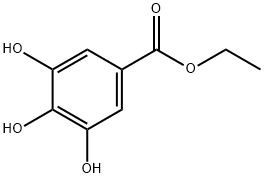
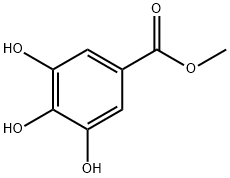
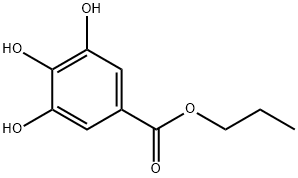
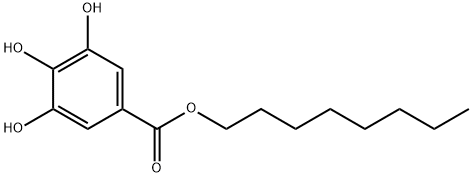
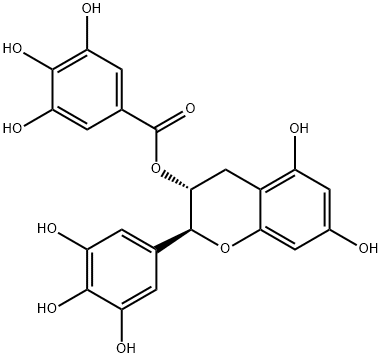
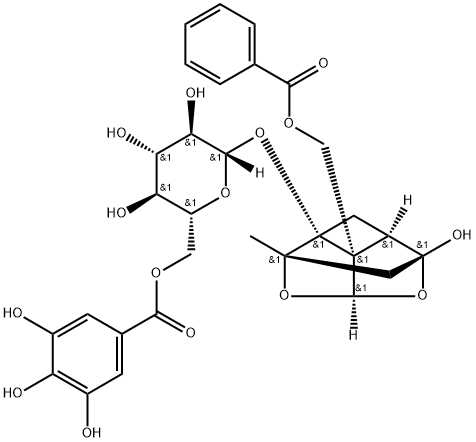
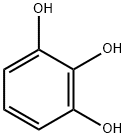
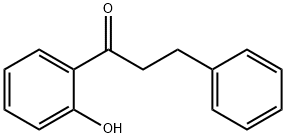
You may like
-
 Gallic acid 98% CAS 149-91-7View Details
Gallic acid 98% CAS 149-91-7View Details
149-91-7 -
 Sodium Sulfite Powder CAS 149-91-7View Details
Sodium Sulfite Powder CAS 149-91-7View Details
149-91-7 -
 99% Gallic Acid PowderView Details
99% Gallic Acid PowderView Details
149-91-7 -
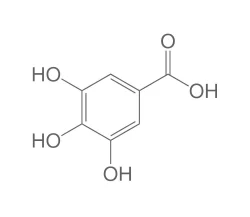 Gallic Acid Phytochemical Powder, Purity: 99%View Details
Gallic Acid Phytochemical Powder, Purity: 99%View Details
149-91-7 -
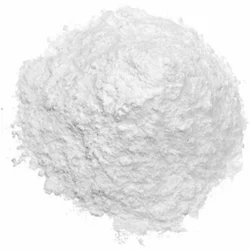 3,4,5-TRIHYDROXYBENZOIC ACID, 25kgView Details
3,4,5-TRIHYDROXYBENZOIC ACID, 25kgView Details
149-91-7 -
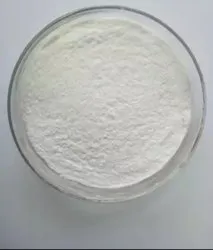 Gallic acidView Details
Gallic acidView Details
149-91-7 -
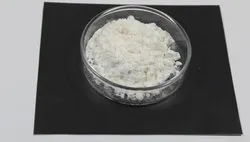 Gallic AcidView Details
Gallic AcidView Details
149-91-7 -
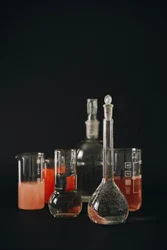 3,4,5-Trihydroxy Benzoic AcidView Details
3,4,5-Trihydroxy Benzoic AcidView Details
149-91-7
